On September 8, I returned to one of the Nation’s least visited areas of its Parks system, the Bering Land Bridge National Preserve. (see a post from last year’s visit) Located on Alaska’s Seward Peninsula, the Preserve’s coastal boundary lies along the Bering Sea, just 55 miles from Siberia. Many years ago, during the Pleistocene Ice Age, the sea level was about 300 feet lower due to the earth’s water being locked up in substantial ice masses. This exposed a land mass between Siberia and the Western shores of Alaska’s Seward Peninsula. Most archeologists agree that across this land mass, also known as Beringia, animals, and people migrated from Asia to populate the Americas.
Inland
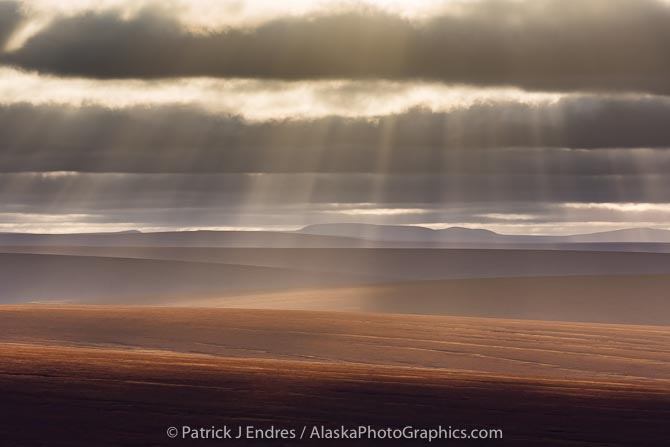
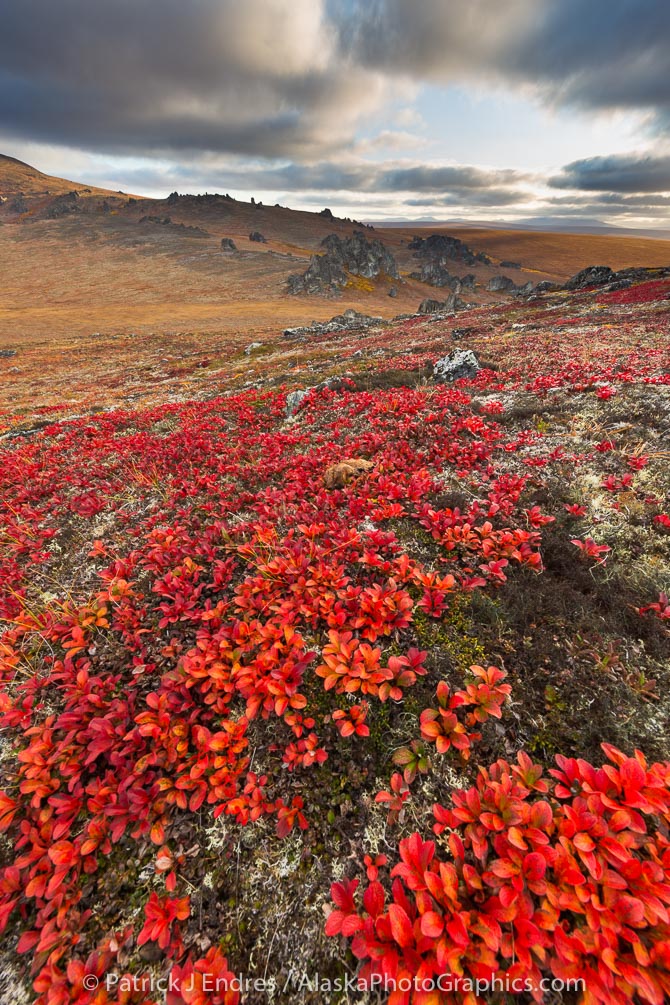
Some friends and I spent a few days hiking and photographing the inland part of the Preserve, a vast, open, treeless landscape that feels hauntingly primordial. It is situated just north of the continental divide (this far north and west is only 2600 ft.). The granite tors that line its gently sloping ridges take on shapes of faces and creatures with just the slightest imagination. Sculpted by wind and water over the centuries, these time-embodied edifices stand as custodians and guards of history and its ancient mysteries.
Northern Lights
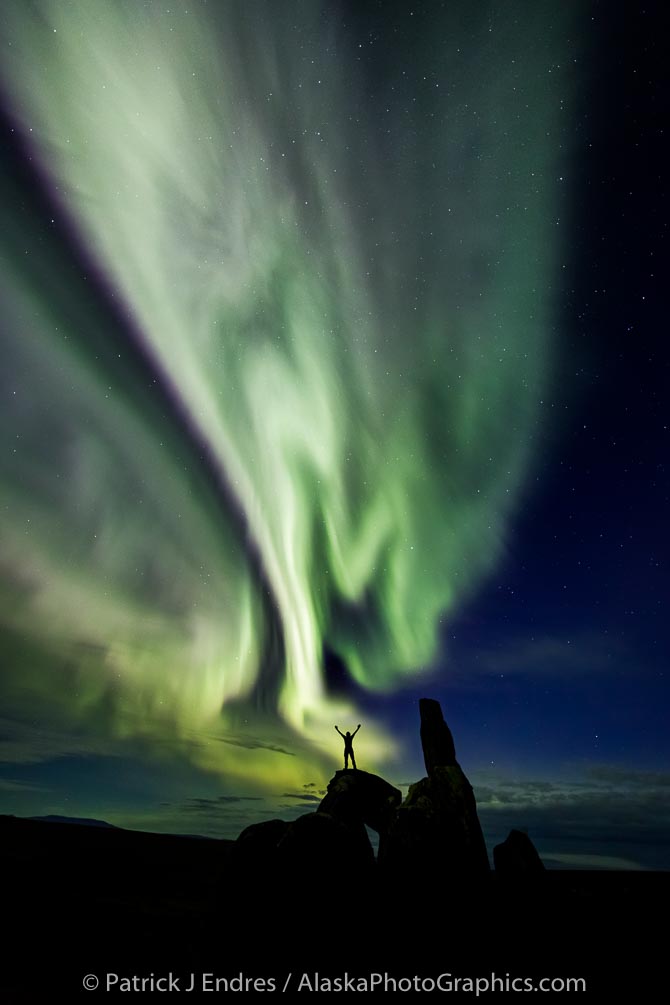
We had hopeful dreams of photographing the northern lights in this special place but kept our expectations low due to the constantly changing cloudy weather during the autumn season. But early one morning at 1:30 a.m., the completely clouded sky seemed to magically dissipate into a clear and starry night in just 10 minutes. Underneath the clouds emerged arcs and flashes of light and color that began on the northern horizon and, in a few minutes, spilled across the entire sky in all directions. In moments like this–in places like this–that time seems suspended, and both pictures and words fail to convey the breadth of the experience. I found myself betwixt, sandwiched by the practical, technical endeavor of photographing and the awe-infused desire to sit and watch–to become part of the land and sky phenomenon.
Weather
In a short stay of only four days, the weather transitioned from pure sunshine, rolling clouds, fog, rain, strong north winds, and ultimately snow, nearly stranding us beyond our scheduled bush plane pickup time. I love and hate this about travel in Alaska’s remote wilderness regions. You must always remain flexible and go with the weather.
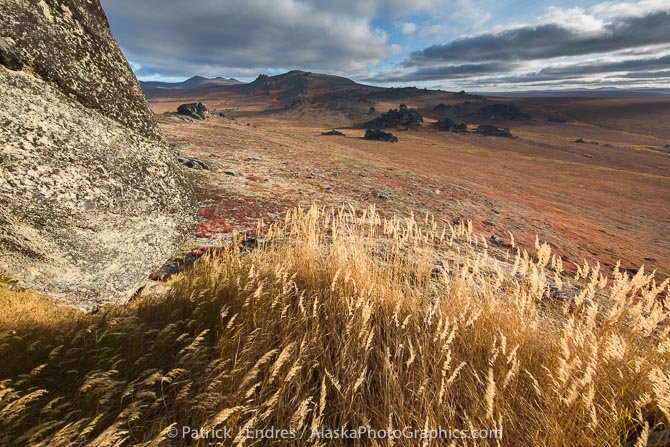
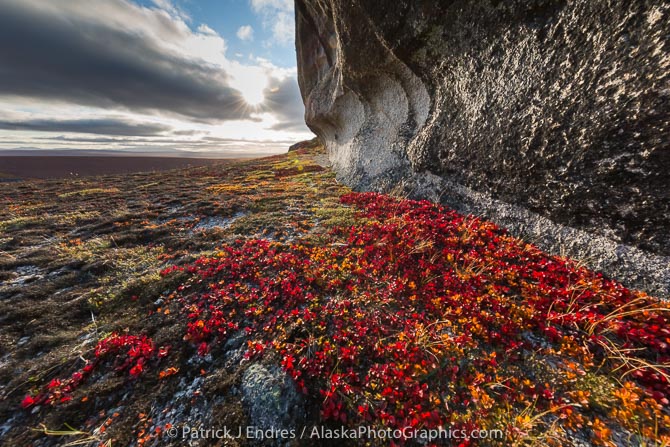
Grand Alaska
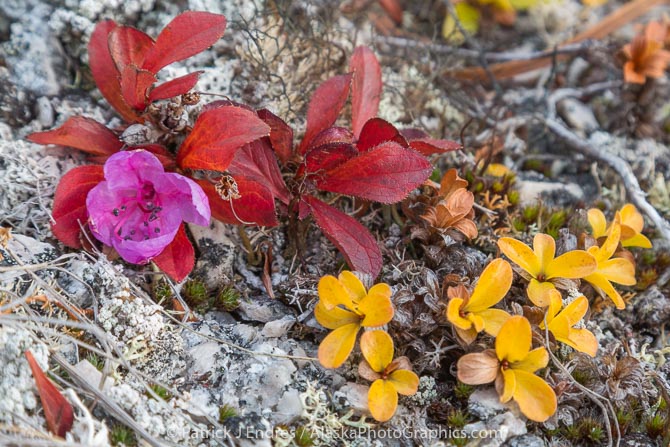
It never ceases to amaze me how diverse and grand Alaska’s landscape is. There are discoveries continually. For example, in contrast to the epic skies of aurora arcing over Stonehenge-like features, I saw a flower I’d never seen before. It is a small species called the Kamchatka rhododendron, a small pink blossoming plant that hugs the ground closely to survive in such a harsh and windy environment.
That journey marks the close of my summer season as the colors of autumn fade into winter. It is time to say goodbye to the short and snowless period and prepare for the soon-arriving white landscape. In October, I’ll be spending three weeks above the Arctic circle, guiding photographers in search of the northern lights and arctic wildlife. It will, as always, be filled with new and magnificent sights. And true to Alaska’s form, I can’t wait for the discoveries.






